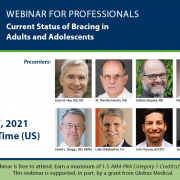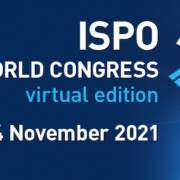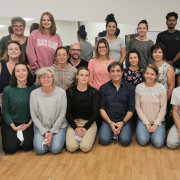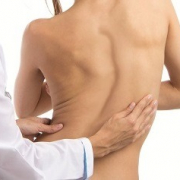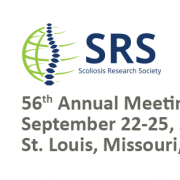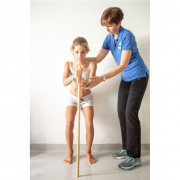I’m Ilaria, and I have spent the past 6 years wearing a scoliosis brace.
At last, on 28/6/2021, after countless sacrifices, many, many moments when it felt like everything was against me, and others when things seemed to be going better, I finally came to the end of my “journey” with ISICO.
In spite of the difficulties I had along the way, as time went by my check-ups became increasingly encouraging, my back stabilised, and I was able to leave my brace off more and more; also, thanks to the exercises, the cosmetic appearance of my trunk improved.
There have obviously been lots of ups and downs over these years, but these have helped me to grow up: I now know that the low points teach you the importance of persevering, of keeping your head held high and always looking for the positive side of things.
Through wearing a brace, I have come to realise that I was a rather superficial person before. However, over time I have matured, and in fact, I learned to really appreciate the true value of situations and times spent both in and out of my brace.
My brace also helped me to appreciate what people really thought of me, and how much they cared about me.
When I first started wearing a brace, in the 4th year of primary school, my classmates and teachers didn’t know at all what it was for or understand why I needed to wear it. For them, there was no point to it, whereas I realised that it represented my “salvation”.
Luckily, over time and in my next school I came across people (classmates and teachers) who knew more about it and were always very supportive.
One very important factor in getting me to the point I’ve reached today was the “brace camp” holiday, organised by ISICO, that I had on the island of Asinara in Italy in 2018. There, I made some lasting friendships and learned that wearing a brace on holiday was no big deal, even if I could only leave it off for a few hours a day.
During that holiday, the physiotherapists taught us that doing postural exercises for our backs could actually be fun. They encouraged us and helped us to “put up” with keeping our braces on for the prescribed number of hours. What’s more, even though we weren’t able to spend very much time with our braces off, we were still able to enjoy the sea and the natural surroundings. They even taught us how to go in the water in a brace.
In the course of this whole experience, I have met many different people, with different stories, and this has helped me to see that while everyone at ISICO is on the same journey, each person experiences and approaches it in their own way.
I want to thank Dr Monia Lusini, who has always been a great support, whatever the circumstances, but my most heartfelt thanks go to my parents, who have always been there for me through thick and thin, supporting me and encouraging me not to give up and always to be proud of myself and persevere.
My parents are amazing, always ready to do anything for me and give me whatever I need.
Finally, I hope the things I have said might be of help to lots of other young brace wearers out there!
My message to them is: stay strong and stay brave because in the end all your sacrifices and hard work will pay off. Before you know it, you will be seeing the light at the end of the tunnel!
And don’t forget! Go in the sea as often as you like… just slip on your brace undershirt, brace and swimming costume and go for it! After all, there’s nothing quite like a refreshing dip ❤️

